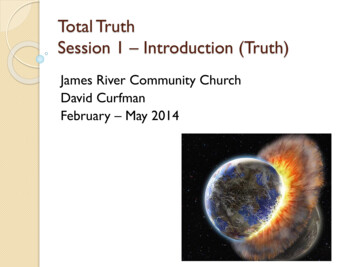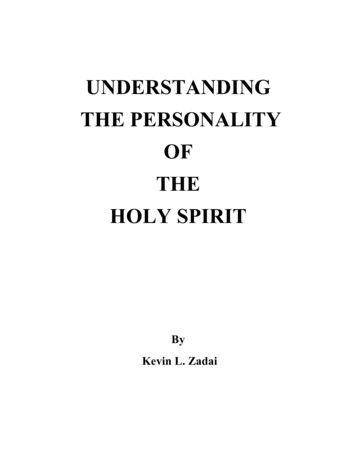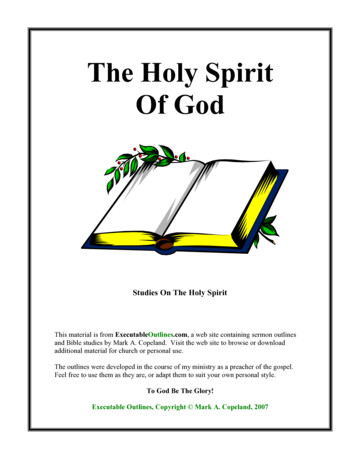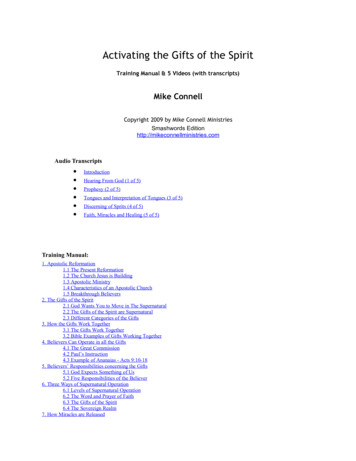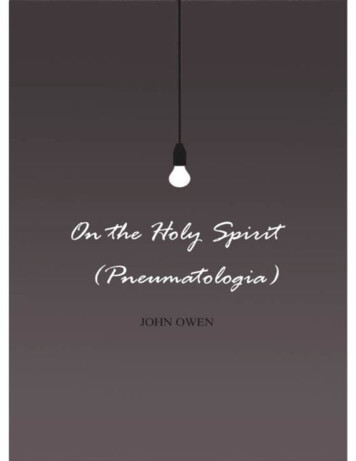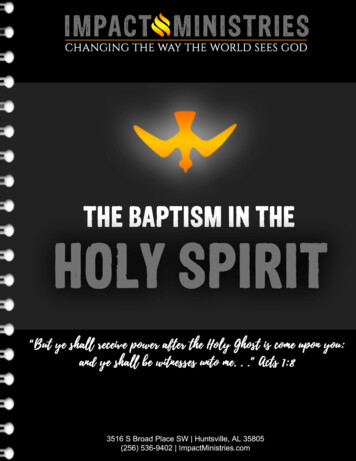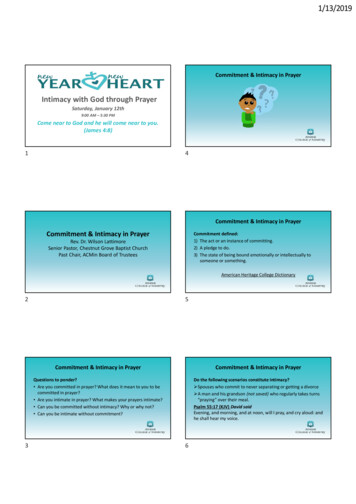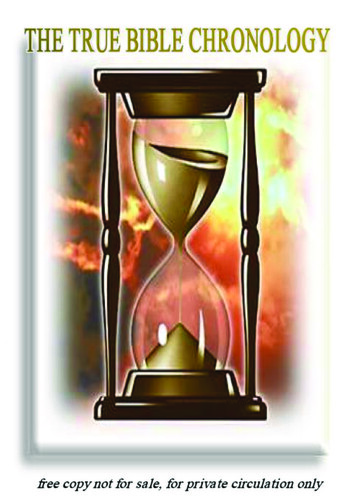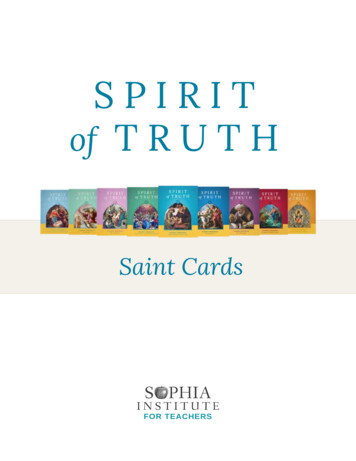
Transcription
SPIRITof T R U T HSaint Cards
List of SaintsSt. Margaret Mary Alacoque. . . . . . . . . . . . . . . . . . . . . . . . . . . . . . . . . . . . . . . . . . . . . . . . . . . . . . . . . 1St. Catherine of Alexandria. . . . . . . . . . . . . . . . . . . . . . . . . . . . . . . . . . . . . . . . . . . . . . . . . . . . . . . . . . 2St. Thomas Aquinas. . . . . . . . . . . . . . . . . . . . . . . . . . . . . . . . . . . . . . . . . . . . . . . . . . . . . . . . . . . . . . . . . 3St. Jeanne D’Arc. . . . . . . . . . . . . . . . . . . . . . . . . . . . . . . . . . . . . . . . . . . . . . . . . . . . . . . . . . . . . . . . . . . . 4St. Clare of Assisi. . . . . . . . . . . . . . . . . . . . . . . . . . . . . . . . . . . . . . . . . . . . . . . . . . . . . . . . . . . . . . . . . . . 5St. Francis of Assisi. . . . . . . . . . . . . . . . . . . . . . . . . . . . . . . . . . . . . . . . . . . . . . . . . . . . . . . . . . . . . . . . . 6St. Augustine. . . . . . . . . . . . . . . . . . . . . . . . . . . . . . . . . . . . . . . . . . . . . . . . . . . . . . . . . . . . . . . . . . . . . . .7St. Teresa of Ávila . . . . . . . . . . . . . . . . . . . . . . . . . . . . . . . . . . . . . . . . . . . . . . . . . . . . . . . . . . . . . . . . . . 8Bl. Chiara Luce Badano. . . . . . . . . . . . . . . . . . . . . . . . . . . . . . . . . . . . . . . . . . . . . . . . . . . . . . . . . . . . . . 9St. Bernadette . . . . . . . . . . . . . . . . . . . . . . . . . . . . . . . . . . . . . . . . . . . . . . . . . . . . . . . . . . . . . . . . . . . . 10St. Teresa of Calcutta. . . . . . . . . . . . . . . . . . . . . . . . . . . . . . . . . . . . . . . . . . . . . . . . . . . . . . . . . . . . . . . 11Pope St. John XXIII. . . . . . . . . . . . . . . . . . . . . . . . . . . . . . . . . . . . . . . . . . . . . . . . . . . . . . . . . . . . . . . . 12St. John Chrysostom. . . . . . . . . . . . . . . . . . . . . . . . . . . . . . . . . . . . . . . . . . . . . . . . . . . . . . . . . . . . . . . 13St. Peter Claver . . . . . . . . . . . . . . . . . . . . . . . . . . . . . . . . . . . . . . . . . . . . . . . . . . . . . . . . . . . . . . . . . . . 14Servant of God Dorothy Day. . . . . . . . . . . . . . . . . . . . . . . . . . . . . . . . . . . . . . . . . . . . . . . . . . . . . . . . 15St. Juan Diego. . . . . . . . . . . . . . . . . . . . . . . . . . . . . . . . . . . . . . . . . . . . . . . . . . . . . . . . . . . . . . . . . . . . . 16St. Katharine Drexel . . . . . . . . . . . . . . . . . . . . . . . . . . . . . . . . . . . . . . . . . . . . . . . . . . . . . . . . . . . . . . . 17St. Dominic. . . . . . . . . . . . . . . . . . . . . . . . . . . . . . . . . . . . . . . . . . . . . . . . . . . . . . . . . . . . . . . . . . . . . . . 18St. Josemaría Escrivá. . . . . . . . . . . . . . . . . . . . . . . . . . . . . . . . . . . . . . . . . . . . . . . . . . . . . . . . . . . . . . . 19St. Faustina. . . . . . . . . . . . . . . . . . . . . . . . . . . . . . . . . . . . . . . . . . . . . . . . . . . . . . . . . . . . . . . . . . . . . . . 20Bl. Pier Giorgio Frassati. . . . . . . . . . . . . . . . . . . . . . . . . . . . . . . . . . . . . . . . . . . . . . . . . . . . . . . . . . . . 21St. Maria Goretti . . . . . . . . . . . . . . . . . . . . . . . . . . . . . . . . . . . . . . . . . . . . . . . . . . . . . . . . . . . . . . . . . . 22
Bl. Miguel Pro Juárez. . . . . . . . . . . . . . . . . . . . . . . . . . . . . . . . . . . . . . . . . . . . . . . . . . . . . . . . . . . . . . . 23St. Maximilian Kolbe. . . . . . . . . . . . . . . . . . . . . . . . . . . . . . . . . . . . . . . . . . . . . . . . . . . . . . . . . . . . . . . 24St. Thérèse of Lisieux. . . . . . . . . . . . . . . . . . . . . . . . . . . . . . . . . . . . . . . . . . . . . . . . . . . . . . . . . . . . . . 25St. Ignatius of Loyola. . . . . . . . . . . . . . . . . . . . . . . . . . . . . . . . . . . . . . . . . . . . . . . . . . . . . . . . . . . . . . . 26Mary, Mother of Mercy . . . . . . . . . . . . . . . . . . . . . . . . . . . . . . . . . . . . . . . . . . . . . . . . . . . . . . . . . . . . 27St. Paul Miki . . . . . . . . . . . . . . . . . . . . . . . . . . . . . . . . . . . . . . . . . . . . . . . . . . . . . . . . . . . . . . . . . . . . . . 28St. Gianna Beretta Molla . . . . . . . . . . . . . . . . . . . . . . . . . . . . . . . . . . . . . . . . . . . . . . . . . . . . . . . . . . . 29St. Monica. . . . . . . . . . . . . . . . . . . . . . . . . . . . . . . . . . . . . . . . . . . . . . . . . . . . . . . . . . . . . . . . . . . . . . . . 30St. Thomas More. . . . . . . . . . . . . . . . . . . . . . . . . . . . . . . . . . . . . . . . . . . . . . . . . . . . . . . . . . . . . . . . . . 31St. Peter Nolasco. . . . . . . . . . . . . . . . . . . . . . . . . . . . . . . . . . . . . . . . . . . . . . . . . . . . . . . . . . . . . . . . . . 32St. Paul. . . . . . . . . . . . . . . . . . . . . . . . . . . . . . . . . . . . . . . . . . . . . . . . . . . . . . . . . . . . . . . . . . . . . . . . . . . 33St. Vincent de Paul . . . . . . . . . . . . . . . . . . . . . . . . . . . . . . . . . . . . . . . . . . . . . . . . . . . . . . . . . . . . . . . . 34St. Patrick. . . . . . . . . . . . . . . . . . . . . . . . . . . . . . . . . . . . . . . . . . . . . . . . . . . . . . . . . . . . . . . . . . . . . . . . 35Pope St. John Paul II. . . . . . . . . . . . . . . . . . . . . . . . . . . . . . . . . . . . . . . . . . . . . . . . . . . . . . . . . . . . . . . 36St. Peter. . . . . . . . . . . . . . . . . . . . . . . . . . . . . . . . . . . . . . . . . . . . . . . . . . . . . . . . . . . . . . . . . . . . . . . . . . 37St. Martin de Porres. . . . . . . . . . . . . . . . . . . . . . . . . . . . . . . . . . . . . . . . . . . . . . . . . . . . . . . . . . . . . . . 38St. Catherine of Siena. . . . . . . . . . . . . . . . . . . . . . . . . . . . . . . . . . . . . . . . . . . . . . . . . . . . . . . . . . . . . . 39St. Stephen. . . . . . . . . . . . . . . . . . . . . . . . . . . . . . . . . . . . . . . . . . . . . . . . . . . . . . . . . . . . . . . . . . . . . . . 40St. Kateri Tekakwitha. . . . . . . . . . . . . . . . . . . . . . . . . . . . . . . . . . . . . . . . . . . . . . . . . . . . . . . . . . . . . . 41St. Jean-Marie Vianney. . . . . . . . . . . . . . . . . . . . . . . . . . . . . . . . . . . . . . . . . . . . . . . . . . . . . . . . . . . . . 42St. Francis Xavier. . . . . . . . . . . . . . . . . . . . . . . . . . . . . . . . . . . . . . . . . . . . . . . . . . . . . . . . . . . . . . . . . . 43
St. Margaret Mary Alacoque1647-1690Feast Day:October 16Margaret was born to a poor family in the Burgundyregion of France. She developed a special devotion to theBlessed Sacrament, especially while she suffered a longillness. She was so sick that she could not get out of bedfor years. One day she promised the Blessed Virgin Marythat she would enter religious life if she could be cured.Immediately, her health was restored. In thanks, Margarettook Mary as part of her first name. Margaret entered theconvent at the age of 23.Margaret reported that Jesus several times, and revealedto her devotions to His Sacred Heart. He said to her, “Mydivine Heart is so inflamed with love for mankind . that itcan no longer contain within itself the flames of its burningcharity and must spread them abroad by your means.” SisterMargaret Mary described Jesus’ heart as burning andencased by a crown of thorns. The flames were a sign ofJesus’ love for humanity, and the crown of thorns was asymbol of our rejection of Him. Jesus also told Margaretthat He wants people to receive the Eucharist on thefirst Friday of each month, spend an hour in Eucharisticadoration on Thursdays, and celebrate the Feast of theSacred Heart.At first, only Margaret’s superior believed that Margarethad really seen and heard Jesus. But Margaret persisted,and eventually she was able to begin celebration of theFeast of the Sacred Heart in her convent. Later in a chapelwas built nearby in honor of the Sacred Heart. Margaretdied two years later. Her last words were, “I need nothingbut God, and to lose myself in the heart of Jesus.” PopePius IX officially added the Feast of the Sacred Heart tothe Church calendar in 1856. S OP H IA IN S TITU TE FOR TE A C H E RS1
St. Catherine of AlexandriaCatherine was born in the year 287 in Alexandria,Egypt. When she was young, she read and studiedas much as she could. She had a vision of Jesus andMary, and so became a Christian. This was bravebecause at that time being a Christian was illegal.The penalty was often torture and death!c. 287–c. 305Feast Day:November 25But Catherine had courage. Since she was thegovernor’s daughter, she could talk to the Romanemperor, Maxentius. She urged the emperor to stoppersecuting Christians. The emperor brought 50people to debate with Catherine. But Catherine wasan eloquent speaker. She not only won the debate,but even won more than 200 converts to the Faith,including members of Maxentius’s own family. Theemperor was furious. He had the new Christians putto death, and threw Catherine in jail.Even in prison, St. Catherine gave every momentto Christ. Many people came to visit her, includingthe emperor’s wife. Many of these people becameChristians after their meetings with Catherine. Theemperor had them all killed. When the emperor sawthat torture and imprisonment did not stop Catherinefrom speaking the truth about Jesus Christ, he triedsomething new. He offered to marry her if she woulddeny the Catholic Faith. She refused. Catherine toldhim, “I have become a bride of Christ.” So the emperorsentenced Catherine to death. She was 18 years old.St. Catherine of Alexandria is a great example ofcourage. She is the patron saint of philosophers,preachers, and young female students. S OP H IA IN S TITU TE FOR TE A C H E RS2
St. Thomas AquinasSt. Thomas Aquinas was born in Italy around the year 1224.His father was a count and he had three older brothers andseveral sisters. When he was nineteen years old he joined theDominicans, but his family disapproved. So when Thomaswas on the road, his brothers came with a troop of soldiersto kidnap him! They imprisoned him in a castle for two years.Thomas studied theology and memorized large sections of thebible until his family let him go.1225–1274Feast Day:January 28Then Thomas studied at the University of Paris. He was smart,but never showed off. The other students nicknamed him the“Dumb Ox,” because he was big and always quiet and humble.One of his classmates, thinking that Thomas was too slow tounderstand, offered to explain the day’s lesson to him. Thomasgratefully accepted his help. Then his classmate becameconfused over a difficult part in the lesson. Thomas had toexplain the lesson to his classmate because he had understoodit all along!Thomas wrote many books, the most famous being the Summatheologia, which explains a large part of the Catholic faith.Thomas also loved Jesus in the Eucharist very much. He wroteabout the Eucharist with great prayer. After he had finished,Jesus appeared to him in a vision and told him, “You havewritten well of the sacrament of my Body.” During his vision,Thomas’ body levitated, floating off the ground. Thomas alsowrote many beautiful Eucharistic hymns. We still sing twohymns that he wrote, “O salutaris” and “Tantum Ergo,” duringBenediction.Near the end of his life, Thomas Aquinas had many mysticalvisions. These visions filled him with awe and wonder aboutthe mystery of God. He stopped writing because he knew thatnothing he wrote could ever compare to God.Thomas died at about 50 years of age. He is the patron saintof Catholic schools, colleges, and universities. S OP H IA IN S TITU TE FOR TE A C HERS3
St. Jeanne D’ArcJeanne D’Arc was born in a small French village. WhenJeanne was a teenager, angels and saints appearedto her. The angels and saints told Jeanne to help theking of France in the war against England.Jeanne led her troops to victory. The French were ontheir way to winning the war with Jeanne’s help.1412-1431Feast Day:May 30Some French people were mad about this. Eventhough they were French, they wanted England towin. They arrested Jeanne and put her in jail. Theythrew her in an iron cage. They put chains on herneck, hands, and feet.At her trial, they asked Jeanne tricky questions to tryto confuse her. They tried to get Jeanne to say shewas a witch, and that her visions of saints were bad.Even though Jeanne had helped him, the French kingdid nothing to help her.Jeanne was convicted of witchcraft and heresy(speaking against the Church) and burned alive. Shewas 19 years old.Thirty years later, a Church court said that her trialhad been unfair. Jeanne was declared innocent of allcrimes. S OP H IA IN S TITU TE FOR TE A C H E RS4
St. Clare of Assisi1194-1253Feast Day:August 11Clare was the oldest daughter of a wealthy Italiannobleman. When she was 18, she heard St. Francis of Assisipreach. She asked Francis to help her live according tothe Gospel. A few weeks later on Palm Sunday, she left herhome and met Francis at a chapel. Her hair was cut shortand she put on a plain robe; she gave her possessions tothe poor. She lived at a Benedictine convent until a homewas built for her and her followers next to San Damianochurch, near Assisi.Clare and her followers called themselves the Order ofPoor Ladies of San Damiano. They wore plain robes and noshoes. They lived primarily on alms which Francis’ friarsbegged for, and they prayed, especially for Francis andhis friars. Many women joined Clare. Francis directed thewomen for four years, and then Clare was elected abbess.She wrote a Rule of Life that the sisters be committed tojoyous poverty.So many women joined the order that they begancommunities throughout Italy. Clare also encouraged andadvised Francis in his work of preaching the Gospel. WhenFrancis grew very ill, Clare built a hut for him in an olivegrove hear his monastery, where he rested and prayeduntil he died.On August 9th, 1253, Clare’s rule was approved by PopeInnocent IV. Two days later, surrounded by many of herfollowers, Clare died after listening to one of Francis’ friarsread the Passion of Christ from the Gospel of St. John. S OP H IA IN S TITU TE FOR TE A C H E RS5
St. Francis of AssisiFrancis was born in 1181 into a rich Italian family. Hehad an easy life with lots of friends and was a favoriteamong the noble young men of Italy.1181-1226Feast Day:October 4Francis wished to become a knight and win glory.On his way to battle, he received a vision from Godtelling him to go home and wait for a different kindof knighthood. He listened. One day, when he waspraying in a chapel, Christ spoke to Francis fromthe crucifix. Jesus said, “Francis, repair my church.”Francis did exactly what Jesus said. He fixed thechapel’s walls and roof. But Jesus wanted Francis tofix more than just the physical walls of the Church.He had plans for Francis to build up His Churchthroughout the world.Francis followed Christ’s commands. Many menjoined Francis. They also gave away their possessions.They begged when they needed food. They gavewhatever they did not need to the poor and the sick.This was the knighthood Francis had been lookingfor: a knighthood in service of Christ and of others.Francis set out to Egypt to try to make peace with theSultan who was fighting Christians in the Crusades.The Sultan was impressed by Francis, but the warcontinued, so Francis returned to Italy.While praying one evening, Francis received thestigmata (wounds like the ones Jesus received on theCross). He died a few years later. Religious men allover the world today continue to live according to therules of St. Francis. They are known as Franciscans. S OP H IA IN S TITU TE FOR TE A C H E RS6
St. AugustineAugustine was born on the northern coast of Africa.His mother was St. Monica. She spent her life sharingJesus with her family.Augustine was very bright. His parents sent him tothe best schools. He read great books. He became apopular speaker and teacher.354-430Feast Day:August 28But Augustine was living a wicked life. His mother andthe Bishop of Milan, St. Ambrose, kept trying to helpAugustine see that God’s mercy had no limits. FinallyAugustine was converted to Christianity. He became apriest. Later he was made Bishop of Hippo.Augustine became one of the most importantChristian writers ever. He wrote about how all of uswant to be with God. He wrote about love. He saidthe Church should always show mercy. He wroteabout how we need God’s grace.During Augustine’s life, the city of Rome wasdestroyed. Many people were scared. But Augustinehelped people see that Christians’ true home wasHeaven.Augustine died when he was 75. He wrote hundreds ofsermons and many important books. He gave hope tocountless people. He is a Doctor of the Church. This isa very special title that means his writings helped formCatholic doctrine. S OP H IA IN S TITU TE FOR TE A C H E RS7
St. Teresa of ÁvilaTeresa was born in a part of Spain called Ávila. Whenshe was younger, she enjoyed being with friends andhaving fun. She wanted to love Jesus, but she worriedshe wasn’t good enough.1515-1582Feast Day:October 15Teresa’s father sent her to a convent (a place wherenuns live). But the convent was a bad place. Thesisters there did not take their religious vowsseriously.Teresa prayed for almost 20 years. She felt likeJesus wasn’t answering her. She almost gave up. Buta priest encouraged her to keep trying. Then shefinally started to feel like God was listening. Whenshe prayed, she would start to cry. She would feel likeshe couldn’t hear, see, smell, or even touch anything.Sometimes her body would even levitate (rise upoff the ground). She didn’t like it when these thingshappened to her where people could see.But a lot of people were interested in what she hadlearned from God about praying. She wrote booksabout what she had learned. Teresa decided to starta new convent. Her convent would be focused onprayer and living simply. A lot of young ladies joined.Long after she died, Pope Paul VI named her a Doctorof the Church. This is a very special title that meansher writings helped form Catholic doctrine. S OP H IA IN S TITU TE FOR TE A C H E RS8
Bl. Chiara Luce BadanoChiara was born in a small Italian village. Inkindergarten, she started saving her money so shecould give it to people who were going to help peoplein Africa. She gave her best toys to poor children. Atschool, she gave her snacks to poor classmates.1971–1990Feast Day:October 29When Chiara was nine, she joined a Catholic groupthat brought Christians around the world together.She also enjoyed tennis, hiking, swimming, singing,dancing. School was hard for Chiara, but she kepttrying. When Chiara was 16, she went on a retreat inRome. She became even more devoted to Jesus.One day she felt pain her shoulder while she wasplaying tennis. The pain continued and doctors toldher she had cancer in her bones. Cancer is a deadlyand painful disease that doctors cannot always fix.Chiara offered her pain to Jesus. She prayed, “It’s foryou, Jesus; if you want it, I want it too.” She cheeredother patients, her doctor, parents, and friends withher joyfulness. She gave all her money to charity.As she grew more sick, she told her mother not tobe sad for her. She died in October 1990. She was 18years old. S OP H IA IN S TITU TE FOR TE A C H E RS9
St. Bernadette1844–1879Feast Day:April 16St. Bernadette was the oldest of nine children born to apoor family in Lourdes, France. Bernadette was a sicklychild and suffered many ailments throughout her life.When she was 14, Bernadette was collecting firewoodwhen she heard the sound of rushing wind. When shelooked around, she saw a rose floating in a grotto (a smallcave). Then she saw a beautiful woman dressed in whitewith a blue sash. The woman asked Bernadette to come tothe grotto every day for the next two weeks. Bernadette’sparents did not believe her when she told them whatshe had seen. Many townspeople accused Bernadette ofmaking the whole thing upIn all, Bernadette saw the apparition (or supernaturalvision) 18 times. The woman instructed Bernadette topray for sinners, do penance, and to have a chapel builton the spot of the visions. The woman also led Bernadetteto discover a spring of water that had not been therebefore. Bernadette decided to ask the woman who shewas. The woman replied “Je suis L’Immaculate Conception,”French for “I am the Immaculate Conception.” ImmaculateConception is a title of the Blessed Virgin Mary.When she was old enough, Bernadette became a nun.She struggled with numerous illnesses. But in faithfulnessto Jesus’ command to beard wrongs patiently, as shedid when she was a child, Bernadette offered all of hersufferings as penance for the sins of others. She died whenshe was 35. St. Bernadette was canonized by Pope PiusXI on December 8, 1933, the Solemnity of the ImmaculateConception. To this day, water still flows from themiraculous spring at Lourdes. Every year, 5 million peoplecome from all over the world to drink and bathe in itshealing waters. S OP H IA IN S TITU TE FOR TE A C H E RS10
St. Teresa of CalcuttaAgnes Gonxha Bojaxhiu was born in Yugoslavia. Herfamily was devoutly Catholic. She went to a convent(a place where nuns live) in Ireland when she was18. There she received the name Teresa. She wasquiet and shy. Very few people there understood herlanguage.1910-1997Feast Day:September 5Her community sent her to India. There she was aschool teacher for many years. She learned to speakthe local languages.One day in 1946, Mother Teresa was on a train. Onthat train she received a call to serve “the poorest ofthe poor.” She started her own religious communityto do this work.Mother Teresa helped people throughout India. Evenif they were extremely poor, or had very seriousdiseases, Mother Teresa showed them love. Shehelped people no one else would help.Pope Paul VI and St. Pope John Paul II praised herwork.Women joined her communities in over 100countries. She continued to help throughout theworld even as her health got worse. She died in1997. S OP H IA IN S TITU TE FOR TE A C H E RS11
Pope St. John XXIIIAngelo Roncalli was born to a large Italian farming family.He completed his seminary studies and became a priestwhen he was 23. Fr. Angelo was assigned to work ofsecretary to his bishop.1881–1963Feast Day:October 11During World War I, Fr. Angelo was drafted to serve as asergeant, stretcher-bearer, and chaplain. After the war,the Pope appointed him to help spread the Faith in Italy.The next Pope had Fr. Angelo consecrated a bishop andsent him to work in dioceses in Eastern Europe and theMiddle East. Bishop Angelo helped thousands of Jewishand European refugees find safety.When World War II began, Bishop Angelo was sent asApostolic Nuncio (a person in charge of a diplomaticmission) to France. He helped save thousands of refugees,especially Jews, from the Holocaust. After the war, he wasmade a Cardinal. Shortly afterwards, he was elected Pope,and he took the name John.Pope John XXIII visited children in hospitals as well asprisoners and young people in reformatory school. Hewrote about marriage and divorce, illness and age. Hewrote that each person is valuable and has the right tolive, and that every person has the duty to care for otherpeople. On October 11, 1962, he began the EcumenicalCouncil, Vatican II, in order to preserve, teach, and spreadthe truth of our Catholic Faith in our current age. Hedied of stomach cancer a few months later. S OP H IA IN S TITU TE FOR TE A C H E RS12
St. John Chrysostom347 - 407Feast Day:September 13John Chrysostom was born in Antioch, Turkey, around thetime that the Roman Empire was split into East and West.He converted to Christianity as a young man, and he wasbaptized when he was 22. For several years he lived inthe mountains as a hermit, spending his days praying andpraising God in solitude. When he was 37, he returnedto Antioch and became a deacon and then a priest. Heimpressed many people with his powerful and eloquentpreaching. He earned the nickname “Chrysostom” whichmeans golden-mouthed. When he was 53, St. John waselected patriarch, or archbishop of Constantinople.John immediately donated to the poor, sent outmissionaries, and ended the extravagant luxury of churchleaders in his area. He advised political leaders to endtheir extravagant luxury as well. His sermons were oftencritical of the rich and powerful. His preaching and hissimple lifestyle made him many enemies. The empress andthe bishop of Alexandria charged St. John with heresy andmisdeeds. John was exiled (or sent away with orders neverto return).The Pope supported John. He sent five bishops to theEmperor to demand he free John from exile, but theEmperor threw the bishops in prison and exiled John evenfarther away, to a city on the very edge of the empire. Thesaint died of exhaustion in 407.St. John Chrysostom is a Doctor of the Church. The mostcelebrated Divine Liturgy in the Byzantine Rite, the DivineLiturgy of St. John Chrysostom, is attributed to him. TheByzantine Rite liturgy looks and sounds different fromHoly Mass in a Latin rite, but it is still completely Catholic. S OP H IA IN S TITU TE FOR TE A C H E RS13
St. Peter ClaverSt. Peter Claver was born to a wealthy Catholic familynear Barcelona, Spain. He entered the Society of Jesus,or the Jesuits, at the age of 20, and he resolved to spendhis life serving others in the colonies of New Spain in theAmericas.1581 –1654Feast Day:September 9Claver arrived in Cartagena, in modern day Columbia, in1610. There, he was moved by the plight of the Africanslaves from West Africa. Thousands of slaves werebrought into Cartagena each year, even though two popeshad prohibited the slave trade by papal decree.Once Fr. Claver was ordained, he undertook his mission tothe slaves with fervor. He would board the slave ships assoon as they docked and begin ministering to those whohad survived the journey. Conditions aboard the shipswere dismal. The holds were crowded, dirty, smelly, anddisease-infested.After the enslaved people had been moved to holdingpens, Fr. Claver would bring them medicine, food anddrink, and affirm their human dignity. Peter would alsocatechize the slaves using pictures and interpreters. Peteris said to have baptized over 300,000 enslaved people.Fr. Claver’s mission fulfilled Jesus’ call to give drink tothe thirsty, not only by satisfying their actual thirst, butby satisfying their thirst for God and dignity. Fr. Claverspent the final four years of his life too sick to leave hisroom, and he died in 1654. Pope Leo XIII canonized St.Peter Claver in 1888 and declared him the patron Saint ofmissionary work among African peoples. S OP H IA IN S TITU TE FOR TE A C H ERS14
Servant of God Dorothy DayDorothy Day was born in New York, and came of ageduring a time when ideas about socialism and communismwere spreading to the U.S. from Europe. Day becomeinvolved in socialist movements. After a series of failedrelationships, she gave birth to a daughter.1897–1980Motherhood changed Day. She decided to have herdaughter baptized in the Catholic Church. She went toMass, read religious books, and became close with aCatholic nun. Her relationship with the “Church of thepoor” grew. She was baptized at age 30.Wishing to serve the poor and outcast, Dorothy and afriend founded the Catholic Worker movement in 1933.This group focused on living justly and serving the needsof others. She described the group’s mission as: “Our ruleis the Works of Mercy It is the way of sacrifice, worship,a sense of reverence.” She published The Catholic Workernewspaper to speak out against unjust working conditions,advocate peace, and spread Church teachings about socialjustice. This newspaper is still in circulation today.Many viewed Day as a radical. But in truth, she lived outChrist’s command to comfort the afflicted through hercommitment to Catholic teaching, active concern for thepoor, and work for peace and justice.It had been love of neighbor that first drew her to the ideasof socialism. But Day came to see that love and violencewere incompatible. She wrote in 1951 that love of neighborcould never justify the forced labor, torture, and murderof millions that went on in China and the Soviet Union.Like many saints who lived their early lives in sin, Day wasconverted to Christ by the grace of God and accomplishedgreat works of love and mercy. She is a Servant of God, thefirst step in the journey towards sainthood. S OP H IA IN S TITU TE FOR TE A C H E RS15
St. Juan DiegoJuan Diego was born in Mexico where he lived with hisuncle. One December morning while walking to church,Juan saw the Virgin Mary standing on Tepeyac hill. TheVirgin asked Juan to tell the bishop that she wanted achapel built on the hill, as a haven for everyone who calledon her help. Juan told the bishop, but the bishop askedJuan to come back another day. As Juan walked back pastTepeyac hill, Mary appeared to him and encouraged him.1474-1548Feast Day:December 9When Juan returned to the bishop, the bishop asked fora sign. Mary visited Juan as he walked home, and shepromised him a sign the next day. But the next day, Juan’suncle was so sick that Juan had to stay home with him.The following day, Juan hurried to church to find a priestto prepare his uncle for death. Juan did not want to stopand explain to Mary why he had not come for the promisedsign, so Juan took a different route to the church. Maryappeared to Juan anyway. She told him he ought always toask her for help. “Am I not here,” she said, “I who am yourmother?” Then she told Juan that his uncle was cured. Sheinstructed Juan to climb up the barren cliff and pick roses.There Juan found many blooming roses, and Mary arrangedthem in the folds of his cloak. When Juan unfolded his cloakbefore the bishop, the roses fell to the ground. On Juan’scloak was an image of the Virgin Ma
St. Thomas Aquinas 1225–1274 Feast Day: January 28 St. Thomas Aquinas was born in Italy around the year 1224. H


